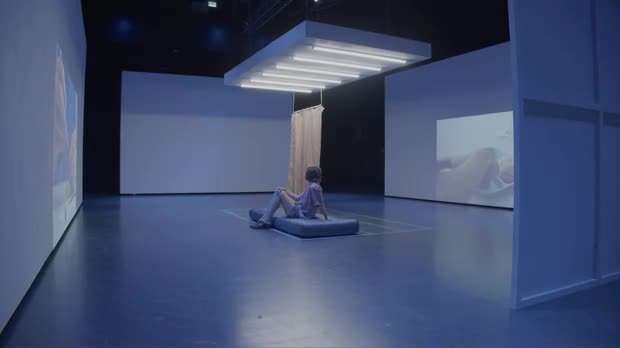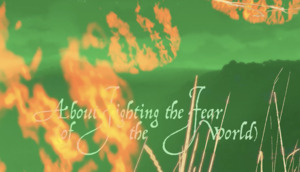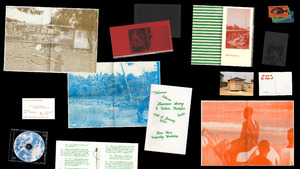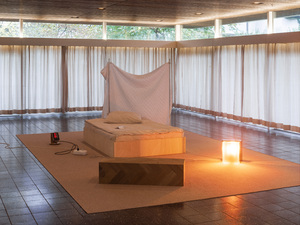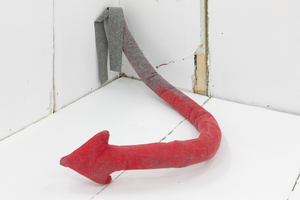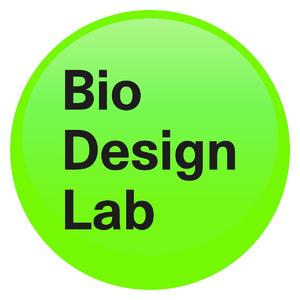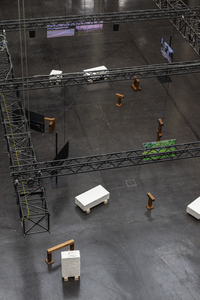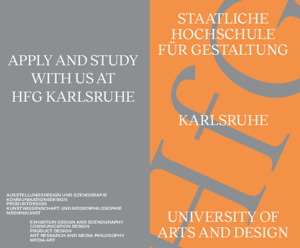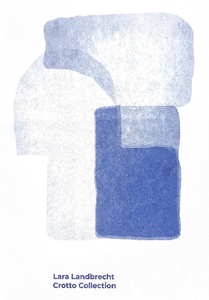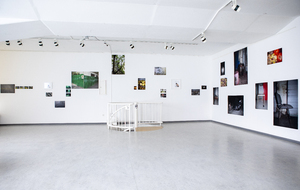Kommentierte Vorlesungsverzeichnisse
Benachbarte Sets (41)Alle Zusammenhänge anzeigen
Diese Sets wurden den gleichen Sets hinzugefügt wie das ausgewählte Set.
41 Inhalte
- Seite 1 von 4
7QM
- Titel
- 7QM
- Titel (en)
- 7sqm - inside views
- Untertitel
- Innen(an)sichten
- Autor/in
- Beschreibung (de)
- Was passiert, wenn Individuen in engen, geschlossenen Räumen mit kaum persönlicher, sondern standardisierter, fest verankerter, textilloser Ausstattung leben, in denen sie einer permanenten Überwachung und Kontrolle sowie streng geregelten Tagesabläufen ausgesetzt sind?
Mascha Dilger untersucht die Parameter sanktionierender Räume: Besuche in unterschiedlichen Justizvollzugsanstalten und Interviews mit ehemaligen Inhaftierten werden in der Rauminstallation 7qm - Innen(an)sichten verarbeitet. Realitäten eines vor der Gesellschaft verborgenen und von ihr verdrängten Ortes werden offengelegt.
Die Arbeit beleuchtet, wie aus einem fremdbestimmten, rasterartigen Alltag einer totalen Institution, Versuche der geistigen Flucht und der Selbstbestimmtheit hervorgehen können. Es werden ortsspezifische und subkulturelle Erscheinungsformen betrachtet, die als Überlebensstrategien zu verstehen sind.
- Was passiert, wenn Individuen in engen, geschlossenen Räumen mit kaum persönlicher, sondern standardisierter, fest verankerter, textilloser Ausstattung leben, in denen sie einer permanenten Überwachung und Kontrolle sowie streng geregelten Tagesabläufen ausgesetzt sind?
- Beschreibung (en)
- What happens when individuals live in narrow, confined spaces with hardly any personal but standardized, firmly anchored, textile-less furnishings, in which they are exposed to permanent surveillance and control as well as strictly regulated daily routines?
Mascha Dilger investigates the parameters of sanctioning spaces: visits to various prisons and interviews with former inmates are processed in the spatial installation "7qm - Innen(an)sichten". Realities of a place hidden from society are revealed.
The work illuminates how attempts of mental escape and self-determination can emerge from the grid-like everyday life of a total institution. Site-specific and subcultural manifestations are considered, which are to be understood as survival strategies.
- What happens when individuals live in narrow, confined spaces with hardly any personal but standardized, firmly anchored, textile-less furnishings, in which they are exposed to permanent surveillance and control as well as strictly regulated daily routines?
- Kategorie
- Typ des Projekts/Werks
- Schlagworte
- Datierung
- 11.07.2023 - 12.07.2023
- Mitwirkende
- Dank an
- Zaur Ahlimanov
- Phillip Banian
- Jeremias Beckford
- Sandra Blatterer
- Barbara Bohnen
- Matthias Bruhn
- Richard Brunner
- Céline Condorelli
- Hannah Cooke
- Jaya Demmer
- Lina Determann
- Nicola Dilger
- Susanne Dilger
- Alfred Dilger
- Manfred Döpke
- Nina Eberle
- Kerstin Eisenmenger
- Constanze Fischbeck
- Ebba Fransén Waldhör
- Laura Haak
- Uwe Habel
- Laurine Haller
- Igor Hardt
- Lina Höhne
- Lovis Iglinski
- Martina Kaltenbrunner
- Tobias Keilbach
- Alexander Knoppik
- Katja Koch
- Mikail Kolbasar
- Hanne König
- Susanne Kriemann
- Claudia Kröhl
- Barbara Kuon
- Alexia Metge
- Paulina Mimberg
- Ilja Morgenstern
- Leonie Mühlen
- Minh Anh Nguyen
- Luise Peschko
- Vlado Petrovic
- Milena Petrovic
- Tibor Pilz
- Christian Platz
- Paul Platz
- Waldemar Präg
- Corinne Riepert
- Thomas Rustemeyer
- Sebastian Schäfer
- Max Schäffer
- Philipp Schell
- Susanne Schmitt
- Mischa Schneider
- Waldemar Schwab
- Henriette Schwabe
- Manuel Sékou
- Alexander Theis
- Alexander Thelen
- Jan Tölle
- Lisa Tölle
- Lioudmila Voropai
- AStA
- Exit - Enter Life e.V.
- Badaue
- JVA Mannheim
- JVA Bühl
- Initiative „Faites Votre Jeu!“
- Sprache
- Material
- Ort: Institution
- Ort
- im großen Studio
- Stadt
- Land
- Beteiligte Institution(en)
- Titel
- 7QM
- Projektleiter/in
- Semester
- Studiengang
- Typ der Abschlussarbeit
- Importiert am
- 26.07.2023
- Übergeordnete Sets
- 3
- Set enthält
- 4 2
About Fighting the Fear (of the World)
- Titel
- About Fighting the Fear (of the World)
- Titel (en)
- About Fighting the Fear (of the World)
- Autor/in
- Beschreibung (de)
- "Über das Bekämpfen der Angst (vor der Welt)" ist eine spekulative Videoarbeit, die ein Spektrum von Phänomenen rund um Karten, Angst, Krieg, Reisen und den Körper abdeckt, wobei der Schwerpunkt auf der Praxis der Kartierung als Instrument zur Unterdrückung und Kontrolle von Land und Menschen liegt. Das Video versucht, einen Rahmen für das Thema zu schaffen, indem es viele verschiedene Geschichten zu einem Cluster zusammenführt, der vielleicht nicht repräsentativ ist, aber einige Teile des Themas beleuchtet. Ästhetisch und strukturell ist das Video von Rollenspielen, der Pre-Vis-Technik (die in Filmproduktionen verwendet wird) und Found Footage inspiriert. Das Szenario ist in einer fernen Zukunft angesiedelt, in der Klimawandel und Massenaussterben längst ihre Auswirkungen gezeigt haben und die Bestien, die vor der großen Kolonisierung über das Unbekannte wachten, zurückgekehrt sind. In der Rolle der Hauptfigur sucht der Zuschauer, angeleitet von einem Erzähler, nach Überresten der alten Welt, um zu verstehen, warum alles kartiert werden musste.
- Beschreibung (en)
- "About Fighting the Fear (of the World)" is a speculative video work that covers a spectrum of phenomena around maps, fear, war, traveling, and the body, with a focus on the practice of mapping as a tool to oppress and control land and people. The video attempts to frame the issue by bringing together many different stories to create a cluster that may not be representative but illuminates some parts of the issue. Aesthetically and structurally, the video is inspired by role-playing games, pre-vis technique (used in film productions), and found footage. The scenario is set in a distant future in which climate change and mass extinction have long since had an impact and beasts that used to watch over the unknown before the big colonization have returned. As the main character, the viewer searches for remnants of the old world, guided by a narrator, in order to understand why everything had to be mapped.
- Typ des Projekts/Werks
- Schlagworte
- Datierung
- 22.02.2024
- Mitwirkende
- Dank an
- Sprache
- Untertitel (Film)
- Material
- Technik/Verfahren/Formate
- MP4
- Abmessungen
- 2500 x 1080 px
- Dauer
- 26 min
- Ort: Institution
- Ort
- Werkschau und Diplominstallation in Raum 222, Video-Screening im Kino im Blauen Salon
- Stadt
- Land
- Titel
- About Fighting the Fear (of the World)
- Projektleiter/in
- Semester
- Studiengang
- Typ der Abschlussarbeit
- Importiert am
- 28.02.2024
- Übergeordnete Sets
- 3
- Set enthält
- 3 3
Absolvent:innen stellen ihre Arbeiten vor - alle Videos
- Titel
- Absolvent:innen stellen ihre Arbeiten vor - alle Videos
- Titel (en)
- Students introduce themselves and their work
- Titel
- Absolvent:innen stellen ihre Arbeiten vor - alle Videos
- Importiert am
- 31.07.2024
- Übergeordnete Sets
- 1
- Set enthält
- 0 3
A man in the shape of...
- Titel
- A man in the shape of...
- Titel (en)
- A man in the shape of...
- Autor/in
- Beschreibung (de)
- „A man in the shape of...“ ist eine von Calvin Kudufia realisierte Ausstellung, die Februar 2024 im Rahmen seines Diploms stattfand. In der Ausstellung beschäftigt sich Kudufia mit der metaphorischen Praxis des Sammelns und Verdichtens: „gathering time and binding it“, wie es die dänische Dichterin Inger Christensen in ihrem Gedicht „Alphabet“ (1981) formuliert hat. Scheinbar unzusammenhängende ‚Dinge‘ werden im Gedicht zusammengetragen und durch die einfache Verwendung eines einzelnen Wortes, des "Existierens" in Zusammenhang gebracht und bedeutsam gemacht. Allein die Geste des Zusammentragen und Benennens verstärkt ihre symbolische Kraft.
Durch einen losen Kontaktpunkt in 2019 begann Kudufias Recherche an der Sepulkralkultur der fantasy coffins, einem traditionellen Kunsthandwerk der Ga-Ethnie in Ghana. Die individuell gestalteten Särge folgen einem mündlich überlieferten Bildindex und sind stellvertretende Gefäße für das ins Jenseits übertretende Leben. Die ‚fantasy coffins‘ verhüllen nicht nur den physischen Körper, ihre Hülle trägt konkrete Spuren der in ihnen gefassten Existenz.
Wie alle Gefäße schirmen die ‚fantasy coffins‘ ihren Inhalt vor den Blicken der Umgebung ab. Im selben Moment dienen sie als repräsentativer Körper des Verstorbenen. Die Suche nach dem richtig geformten Gefäß, sei es ein Weidenkorb für Früchte, ein Buch für Worte oder im Fall der ‚fantasy coffins‘ ein Fischernetz für Fischer, stellt die Suche nach Signifikanz des eigenen Lebens dar: eine treffende Metapher für die Odyssee des Lebens.
In seiner Arbeit „A man in the shape of...“ macht Kudufia sein väterliches Haus in Tema (Ghana) zum physischen Ausgangspunkt seiner Recherche. In Form einer trans-medialen Erzählung wird dessen Essenz eingefangen und greifbar gemacht. Poetische Artefakte und Beobachtungen aus dem Alltag in Ghana werden sorgfältig arrangiert und dienen als Verdinglichung von Zeit. Sie dienen als greifbare Säulen von Kudufias Zeit in Ghana.
„A man in the shape of...“ trägt der angeborenen Sehnsucht nach einer konkreten geografischen Verankerung Rechnung. Kudufia nutzt die gesamte Ausstellung als metaphorischen Fingerzeig auf einen Ort auf der Landkarte.
In Form einer Audioübertragung, einer speziellen Sitzposition auf der Nachbildung eines traditionellen Hockers, referentiellen Bautechniken und einer Dreikanal-Videoinstallation wird diese geografische Verankerung konkret vermittelt. Durch die Untersuchung der Rolle von Ritualen bei der Gestaltung unseres Zugehörigkeitsgefühls, inspiriert durch die philosophischen Überlegungen von Byung Chul Han, bietet die Ausstellung ein Fenster zu einer Kultur, die gleichzeitig vertraut und fremd ist.
Im Mittelpunkt der Ausstellung steht eine Videoinstallation, die in sieben Abschnitte unterteilt ist. Die Aufteilung bezieht sich auf die Tradition der „one-week observation“ und beschreibt jeweils eine Facette von Kudufias persönlicher Reise. Das Video wird begleitet von einem Musikstück der ghanaischen Theatermacherin Edufa T. Sutherland, das mit der Unterstützung des Cellisten Ben Grocock gespielt und aufgenommen wurde. Das Video lässt Kudufias Erinnerungen, Fiktionen und Realitäten verschwimmen und vermischt dabei die Identitäten von Kudufia mit denen seines Vaters und Großvaters und lässt so ein komplexes Netz aus Zugehörigkeiten entstehen.
Eine Publikation, die integraler Bestandteil der Ausstellung ist, bedient sich der Form eines Gefäßes. Eine bedruckte Archivbox sammelt Kudufias Spuren auf seiner Suche nach den ‚fantasy coffins‘ und wird durch eine Hand voll ephemeraler Druckprodukte und Publikationen zum Dokumentationsapparat. Im Mittelpunkt der Archivbox steht ein Interview, zwischen Kudufia und dem Sargmacher Lawrence Anang in dessen Werkstatt in Teshie. Die einzige textliche Spur, die eine klare Verbindung zur Geschichte der Särge herstellt.
Das hölzerne Fundament einer nachgebauten Hütte dient als Sammelpunkt der Ausstellung und ermöglicht die Verbindung zwischen Druckerzeugnissen, Audio, Artefakten und den Betrachtenden. Die Kombination aus gesammeltem haptischen Material und audiovisuellen Arbeiten setzt sich zu einer transmedialen Collage zusammen, in der Kudufia die Geschichte seiner Verwurzelung auf intime Weise erzählt.
- „A man in the shape of...“ ist eine von Calvin Kudufia realisierte Ausstellung, die Februar 2024 im Rahmen seines Diploms stattfand. In der Ausstellung beschäftigt sich Kudufia mit der metaphorischen Praxis des Sammelns und Verdichtens: „gathering time and binding it“, wie es die dänische Dichterin Inger Christensen in ihrem Gedicht „Alphabet“ (1981) formuliert hat. Scheinbar unzusammenhängende ‚Dinge‘ werden im Gedicht zusammengetragen und durch die einfache Verwendung eines einzelnen Wortes, des "Existierens" in Zusammenhang gebracht und bedeutsam gemacht. Allein die Geste des Zusammentragen und Benennens verstärkt ihre symbolische Kraft.
- Beschreibung (en)
- "A man in the shape of..." is an exhibition realised by Calvin Kudufia, which took place in February 2024 as part of his diploma. In the exhibition, Kudufia deals with the metaphorical practice of "gathering time and binding it", as formulated by the Danish poet Inger Christensen. Through a trans-medial narration, the exhibition aims to capture the essence of his father's home in Tema (Ghana) and to make it tangible by carefully compiling poetic artefacts from the observed everyday life in Ghana.
Kudufia's research began with the so-called fantasy coffins, a traditional handicraft practiced by the Ga people of Ghana. The individually designed coffins follow an oral figurative index and are emblematic vessels for life passing into the afterlife. Not only do they conceal the physical body, but their shell bears imprints of the existence that preceded death. To give an example, the vessel of a fisherman might take the form of a boat or fishing net.
Similar to all vessels, they shield their content from its surroundings, simultaneously serving as a representation of the deceased to the eyes of the outside world. The search for the right-shaped vessel, be it a wicker basket for fruit or a book for words, mirrors the journey to discover one's own significance, as displayed figuratively by the fantasy coffins - an apt metaphor for the odyssey of life.
"A man in the shape of..." takes into account the innate longing for a concrete geographical rooting and uses the entirety of the exhibition as a metaphorical finger pointing to a place on the map. This geographical pinning is conveyed in the form of an audio transmission, a special seating position on a replica of a traditional stool, referential construction techniques and a three-channel video installation. By examining the role of rituals in shaping our sense of belonging, inspired by the philosophical reflections of Byung Chul Han, the exhibition offers a window into a culture that is both familiar and foreign at the same time.
At the heart of the exhibition is a video installation divided into seven segments referring to the tradition of the one-week observation, each describing a facet of Kudufia's personal journey. The video installation is accompanied by a musical piece composed by Edufa T. Sutherland, played and recorded with the assistance of cellist Ben Grocock. It blurs the boundaries between memory, fiction, and reality, inviting the viewer to reflect on the complexity of cultural identity and belonging.
The publication, an integral part of the exhibition, also takes the form of a vessel. Borrowing the shape of a printed archive box it collects Kudufia's traces on his search for the fantasy coffins and is conveyed through his graphic expression. At its center is an interview he conducted with coffin maker Lawrence Anang in his workshop in Teshie, the sole textual trace of the coffins' history.
In order to bring all of the pieces together, a wooden fundament of a hut serves as the gathering point of the exhibition, enabling the connection between printed matter, audio, artefacts, and the viewers.
The collected haptic material combined with the audiovisual pieces results in a trans-medial collage in which Kudufia intimately tells the story of his rooting.
- "A man in the shape of..." is an exhibition realised by Calvin Kudufia, which took place in February 2024 as part of his diploma. In the exhibition, Kudufia deals with the metaphorical practice of "gathering time and binding it", as formulated by the Danish poet Inger Christensen. Through a trans-medial narration, the exhibition aims to capture the essence of his father's home in Tema (Ghana) and to make it tangible by carefully compiling poetic artefacts from the observed everyday life in Ghana.
- Kategorie
- Typ des Projekts/Werks
- Schlagworte
- Datierung
- 22.02.2024
- Dank an
- Sprache
- Material
- Ort: Institution
- Ort
- Lichthof 04
- Stadt
- Land
- Titel
- A man in the shape of...
- Projektleiter/in
- Semester
- Studiengang
- Typ der Abschlussarbeit
- Importiert am
- 31.05.2024
- Übergeordnete Sets
- 2
- Set enthält
- 0 21
Anything Besides a Bed
- Titel
- Anything Besides a Bed
- Autor/in
- Beschreibung (de)
- "Anything Besides a Bed" ist eine Kollektion bestehend aus sechs Arbeiten, die sich alle mit bestimmten Aspekten des Betts befassen: Schlafgewohnheiten, Dunkelheit und künstliches Licht, Lesen in und Reden über Betten, deren technologisches und digitales Umfeld sowie Privatsphäre, Intimität und Öffentlichkeit.
Jedes einzelne Objekt entsteht durch Beobachten, Vermischen, Austauschen und Kombinieren seiner kulturhistorischen, archäologischen, philosophischen oder sozialen Kontexte, gleichzeitig aber auch die Kontexte und formalen Aspekte der tatsächlichen Gegenstände, die im Umfeld eines Betts herum zu finden sind.
Daraus ergeben sich sechs Objekte, die nicht nur einfach eine Recherche und Analyse wiedergeben, sondern durch gewisse Interventionen in ihrer Form und Funktionsweise als nutzbares Möbel bzw. technisches Gerät zum Nachdenken anregen.
- "Anything Besides a Bed" ist eine Kollektion bestehend aus sechs Arbeiten, die sich alle mit bestimmten Aspekten des Betts befassen: Schlafgewohnheiten, Dunkelheit und künstliches Licht, Lesen in und Reden über Betten, deren technologisches und digitales Umfeld sowie Privatsphäre, Intimität und Öffentlichkeit.
- Beschreibung (en)
- "Anything Besides a Bed" is a collection consisting of six objects that all deal with certain aspects of the bed: sleep patterns, darkness and artificial light, reading and talking about beds, technological and digital environment as well as privacy and publicity.
Every individual object is conceived by observing, mixing, interchanging, and combining its contexts. These being the research aspects as well as the contexts of being actual objects and pieces of furniture that are found around the bed. The objects don’t just reflect their research but have their own purpose by being thought-provoking interventions in the way they look and are used.
- "Anything Besides a Bed" is a collection consisting of six objects that all deal with certain aspects of the bed: sleep patterns, darkness and artificial light, reading and talking about beds, technological and digital environment as well as privacy and publicity.
- Kategorie
- Typ des Projekts/Werks
- Schlagworte
- Datierung
- October 2023
- Dank an
- Moritz Appich
- Francesca Audretsch
- Massimiliano Audretsch
- Tim Bartel
- Vincent Carl Becher
- Nils Bergmann
- Jonathan Blaschke
- Sibylle Bläser
- Christoph Bläser
- Vanessa Bosch
- Oliver Boualam
- Richard Brunner
- Jules Buchholtz
- Felipe Carrión
- Sam Chermayeff
- Lukas Clark
- Céline Condorelli
- Ute Deutz
- Lizzy Ellbrück
- Lisa Ertel
- Marie Faaß
- Hanna Franke
- Taavi Hallimäe
- Teresa-Louise Häußler
- Susanne Heyer
- Matthias Holznagel
- Bruno Jacoby
- Chris Kabel
- Tobias Keilbach
- Barbara Zoé Kiolbassa
- Florian Knöbl
- Mio Kojima
- Julian Kuf
- Stefan Legner
- Lukas Marstaller
- Mona Mayer
- Isabel Motz
- Anne-Sophie Oberkrome
- Vlado Petrovic
- Barbara Polakova
- Johanna Schäfer
- Susanne Schmitt
- Waldemar Schwab
- Moritz Kamil Simon
- Wieki Somers
- Lorenz Stein
- Marcel Strauß
- Saskia van der Meer
- Leia Morgana Walz
- Jannis Zell
- Phil Zumbruch
- Sprache
- Material
- Abmessungen
- Mattress Multiplug Maße: 240 × 130 × 75 mm, Street Light Lamp Maße: 330 × 330 × 350 mm, Bedspread Curtain Maße: 2300 × 1800 mm / 350 × 350 × 1800 mm, Parquet Chest Maße: 1200 × 400 × 300 mm, Bedside Readings Maße: 109 × 75 × 108 mm, Sleep Timer Maße: 220 × 220 × 240 mm
- Ort: Institution
- Ort
- ZKM Pavillon
- Stadt
- Land
- Beteiligte Institution(en)
- Titel
- Anything Besides a Bed
- Projektleiter/in
- Semester
- Studiengang
- Typ der Abschlussarbeit
- Importiert am
- 05.11.2024
- Übergeordnete Sets
- 3
- Set enthält
- 0 7
Archive Talks
- Titel
- Archive Talks
- Titel (en)
- Archive Talks
- Autor/in
- Beschreibung (de)
- Die Reihe Archive Talks widmet sich der Diskussion und Erarbeitung eines gemeinsamen Verständnisses von, über, mit und durch Archive(n) aus einer transdisziplinären Perspektive. Als Open Resource Center möchten wir zur Entwicklung von künstlerischen Forschungsmethoden in Bezug auf archivarische Studien und Praktiken an der HfG beitragen. Parallel zur Arbeit der studentischen Hilfskräfte, die bereits begonnen haben, die Diplom- und Projektsammlungen ihrer jeweiligen Disziplinen unter der Koordination des ORC zu digitalisieren und zu katalogisieren, wird jede Folge der Serie auf einen bestimmten Aspekt der Archivarbeit fokussieren.
ARCHIVE TALKS I: DIE HERAUSFORDERUNG SCHIERER MENGE
Oliver-Selim Boualam, Barbara Zoe Kiolbassa und Michael Gärtner
Der ORC eröffnet die Serie Archive Talks mit einem Beitrag von Oliver-Selim Boualam, Barbara Zoe Kiolbassa und Michael Gärtner, die gemeinsam an der Dokumentation der documenta fifteen gearbeitet haben, einem der größten Kunstereignisse der Welt, das ein 100-tägiges Programm von Kunstereignissen und Installationen bietet, die an vielen verschiedenen Orten in der Stadt stattfinden und verschieden Live- und zeitbasierte Formate beinhalten. Die Frage ist einfach, aber komplex: Wie geht man mit einer solchen Größenordnung um? Barbara, Michael und Oliver geben Einblicke in ihre Arbeitsmethoden und Erfahrungen und diskutieren verschiedene Strategien der Dokumentation eines extrem vielfältigen und umfangreichen Kunstprogramms.
ARCHIVE TALKS II: Machen: Strategien der Selbstarchivierung
Moritz Nebenführ
29.06.
18:00
Die vom HfG Open Resource Center präsentierte transdisziplinäre Gesprächsreihe Archive Talks widmet sich der Diskussion über die Herausforderungen der Archivforschung und -praxis. Wir setzen die Reihe am 29. Juni fort mit Moritz Nebenführ als Gast, der über Strategien künstlerischer Selbstarchivierung sprechen wird.
Ausgehend von seiner Magisterarbeit und mehrjährigen Forschung sowie Ausstellungsarbeit zu dem belgischen Künstler und Kunstlehrer Jef Geys (1934–2018) spricht HfG Alumnus Moritz Nebenführ über dessen Strategien der Selbstarchivierung. Entlang des Begriffs der
‚Information‘ in seiner diskursiven Prägung durch die Konzeptkunst werden diese Strategien anhand von ausgewählten Ausgaben des Kempens Informatieblad perspektiviert. Die Zeitung veröffentlichte der Künstler ab 1971 als Alternative zu konventionellen Katalogformaten im Selbstverlag.
ARCHIVE TALKS III: Performen & Archivieren
Marie Helen Perreira & Carlos Maria Romero alias Atabey
22.07.2023
15:00
Main Stage
Die Dokumentation und Archivierung von Aufführungspraktiken ist eine Herausforderung, da das Wesen dieser Disziplinen auf einer besonderen Zeitlichkeit und der Einzigartigkeit der Erfahrung beruht. Die Dokumentation und Archivierung von Aufführungen stehen im Konflikt mit dem Wesen dieser Praxis selbst. Das Geschehen der Performance und ihre unwiederholbare Natur stehen im Widerspruch zur fixen Identität archivierter Aufzeichnungen oder Dokumente.
Im Mittelpunkt des Gesprächs steht die ambivalente Beziehung zwischen Performance und ihrer Dokumentation und Archivierung. Das transitorische Ereignis der Performance widersetzt sich seiner dokumentarischen Identifizierung und wird dennoch von dem Versprechen des Archivs angezogen, die Erinnerung an das Transitorische zu bewahren und in die Zukunft zu transportieren.
Der dritte Teil von Archive Talks widmet sich im Rahmen der HfG-Sommerausstellung “Rundgang 2023” der Reflexion des Status und der Natur von Archiven mit Hinblick auf Performance-Praktiken. Marie Helen Perreira & Carlos Maria Romero alias Atabey kommen aus einem engagierten und situierten Umfeld, in dem Archivierungsprozesse mit komplexen Zerbrechlichkeiten konfrontiert sind. Zusammen werden sie ihren Umgang mit archivarischen Herausforderungen in Bezug auf Performance-Praktiken vorstellen.
ARCHIVE TALKS IV: A Grin Without Marker
Filipa César
02.11.2023
18:00
Lichtbrücke
Zum Antritt ihrer Professur für Zeitbasierte Medien und Performance in der Fachgruppe Medienkunst an der HfG ist Filipa César zu Gast bei Archive Talks IV. César hat sich in ihrer künstlerischen Forschung und Praxis mehr als zehn Jahre lang mit den postkolonialen Filmarchiven in Guinea-Bissau beschäftigt.
Luta ca caba inda ist ein kreolischer Ausdruck und bedeutet "Der Kampf ist noch nicht vorbei". Dies ist auch der Titel eines unvollendeten Films im Filmarchiv von Guinea, der die Fertigstellung des Films, des Kampfes und schließlich auch ihres Projekts wie mit einem Fluch belegt. Sie eigneten sich den Titel und seinen Fluch für eine Reihe von Vorführungen und diskursiven Veranstaltungen an, die dazu dienten, die Inhalte des fragmentarischen Korpus zu kanalisieren und die darin enthaltenen Konflikte aufzuspüren. Mit "sie" sind hier die guineischen Filmemacher und das Publikum gemeint, die von der ersten Katalogisierung des Materials in Bissau über die Digitalisierung in Berlin bis hin zur Teilnahme an zahlreichen Vorführungen und Diskussionen an Dutzenden von Orten in den letzten vier Jahren eine Allianz bildeten. Luta ca caba inda hat sich als eine irrelevant-respektlose Kraft gezeigt, die sagt: Ich bin nicht von gestern.
César und die guineischen Filmemacher*innen wollen die Bilder der Bevölkerung zurückgeben, der sie gehören und an die sie gerichtet sind, und zwar in einem bescheidenen Prozess der Wiederherstellung der Bilder und ihrer Archivierung. Anstelle von kultureller Aneignung oder Vermarktung geht es ihnen um die Wiederbelebung der Archive, um den Aufbau eine Kine-Verwandtschaft, wie sie der guineische Revolutionär Amílcar Cabral im Sinne hatte, als er die Filme in Auftrag gab. Archive Talks lädt die HfG-Community ein, Filipa César willkommen zu heißen und darüber zu diskutieren, wie wir von der Vergangenheit lernen und verlernen können.
ARCHIVE TALKS V: Momente der Dringlichkeit und des Überschwangs
Özge Çelikaslan
26.11.2024
18:00
Lichtbrücke
Archive werden nicht immer mit staatlichen Mitteln und institutioneller Politik aufgebaut. Sie können auch aus Bewegungen oder aus der Initiative von Einzelpersonen hervorgehen. Der fragile und oftmals nomadische Zustand dieser Archive wirft viele Fragen auf, die in Momenten der Dringlichkeit und des Überschwangs behandelt werden müssen. Können ein autonomer Akt der Archivierung oder die Übernahme der Archive als Gemeingut eine Antwort auf diesen Moment sein?
An diesem Abend haben wir Dr. Özge Çelikaslan mit ihrem neu erschienenen Buch „Archiving the Commons: Looking Through the Lens of bak.ma“ (dpr-barcelona, 2024) zu Gast, die ihre gleichnamige Dissertation an der HfG Karlsruhe begonnen und an der HBK Braunschweig abgeschlossen hat. Im Mittelpunkt des Vortrags steht ihre intensive Feldforschung zu bak.ma, einem webbasierten nomadischen Videoarchiv, das in der Türkei nach den berühmten Gezi-Protesten von 2013 initiiert wurde.
„Geschichten von Archiven sind immer Geschichten von Phantomen, vom Tod, vom Verschwinden oder von der Auslöschung von etwas, von der Bewahrung dessen, was übrig bleibt, und seinem möglichen Wiederauftauchen – von den einen gefürchtet, von den anderen ersehnt“, schreibt Thomas Keenan in seinem Vorwort zu diesem Buch.
ARCHIVE TALKS VI: E-flux Index: Archiving the Present and Indexing the Arts
George MacBeth
12.02.2025 ab 17:30 Uhr
Lichtbrücke
Seit Ende der 1990er Jahre bestimmt das Internet zunehmend unseren Alltag und verändert unsere Kommunikation, die ohne Internet kaum noch zu denken ist. Der Eintritt von e-flux in die Kunstwelt geht auf diesen Moment des „coming online“ in den späten 1990er Jahren zurück, zunächst als Plattform für die Verbreitung von Pressemitteilungen einer kuratierten Liste von Institutionen, Museen und Galerien, später als eigener Verlag - mit e-flux Journal (gegründet 2004) und e-flux Books.
Die kuratorischen und publizistischen Aktivitäten von e-flux.com haben sich seither in unzählige Richtungen verzweigt, vermitteln Diskussionen sowohl on- als auch offline und helfen, kritische Trends in Kunst und Theorie zu verfolgen und sogar zu etablieren. Inzwischen gibt es sechs regelmäßig erscheinende Publikationsreihen: e-flux journal, e-flux Architecture, e-flux Notes, e-flux Film Notes, e-flux Criticism und e-flux Education.
Beim digitalen Publizieren in diesem Umfang stellt sich die Frage, wie mit einer solchen Masse an Informationen umzugehen ist. Wie kann man die Publikationen strukturieren und dabei Parallelen zwischen den aktuellen Diskussionen in den Bereichen Kunstkritik, Architektur und Design sowie Philosophie aufzeigen?
e-flux Index ist ein Versuch, diese Frage zu beantworten. Beim Index handelt sich um eine neue vierteljährlich erscheinende Printpublikation mit dem Auftrag, die chaotischen Ströme der gegenwärtigen Diskurse zu entwirren. In jeder Ausgabe werden in Auftrag gegebene Essays, Rezensionen und Artikel aus den fünf verschiedenen e-flux-Rubriken unter neuen Fragestellungen kombiniert. Die gedruckte Ausgabe des Index erscheint nun in ihrer fünften Ausgabe und ist in ausgewählten Kunst- und Designbuchhandlungen sowie in Museen in Kanada, Ostasien, Europa, Nordamerika und dem Vereinigten Königreich erhältlich.
In dieser Veranstaltung wird der Herausgeber des e-flux Index, George MacBeth (HfG), die redaktionelle und archivarische Logik hinter diesem neuen Publikationsprojekt darstellen und aufzeigen, wie es sich in einen breiteren Kontext archivarischer Aktivitäten im Kunstbereich einfügt.
- Die Reihe Archive Talks widmet sich der Diskussion und Erarbeitung eines gemeinsamen Verständnisses von, über, mit und durch Archive(n) aus einer transdisziplinären Perspektive. Als Open Resource Center möchten wir zur Entwicklung von künstlerischen Forschungsmethoden in Bezug auf archivarische Studien und Praktiken an der HfG beitragen. Parallel zur Arbeit der studentischen Hilfskräfte, die bereits begonnen haben, die Diplom- und Projektsammlungen ihrer jeweiligen Disziplinen unter der Koordination des ORC zu digitalisieren und zu katalogisieren, wird jede Folge der Serie auf einen bestimmten Aspekt der Archivarbeit fokussieren.
- Beschreibung (en)
- Archive Talks is a series dedicated to discussing, unlearning and envisioning common understanding on, about, with and through archives from a transdisciplinary perspective. As Open Resource Center we aim to contribute to the development of artistic research methodologies in relation to archival studies and practices at HfG. Running parallel to the work of the student assistants who already started to digitize and catalog the diploma and project collections of their corresponding departments under ORC coordination, every session will focus on a particular aspect of archival work.
ARCHIVE TALKS I: THE CHALLENGE OF SCALE
Oliver-Selim Boualam, Barbara Zoé Kiolbassa and Michael Gärtner
ORC kicks off Archive Talks with Oliver-Selim Boualam, Barbara Zoé Kiolbassa and Michael Gärtner who worked together on the documentation of documenta fifteen, one of the biggest art events of the world, offering a 100-day art events and installations program taking place in many different locations throughout the city and including many live and time-based formats. The question is simple but complex: how to deal with such a scale? Barbara, Michael and Oliver will give insight into their working methods and experiences and discuss various strategies for documenting such an extremely diverse and extensive art program.
ARCHIVE TALKS II: Making: Strategies of Self-Archiving
Moritz Nebenführ
Presented by the HfG Open Resource Center, the Archive Talks series is dedicated to discussing, unlearning and envisioning common understanding on, about, with and through archives from a transdisciplinary perspective. We continue the series on June 29 with guest Moritz Nebenführ, who will talk about artistic strategies of self-archiving.
Drawing on his master thesis and several years of research and curatorial work on the Belgian artist and art educator Jef Geys (1934-2018), HfG alumnus Moritz Nebenführ will discuss Geys' strategies of self-archiving and present close readings of selected issues of the Kempens Informatieblad, a newspaper the artist self-published beginning in 1971 as an alternative to conventional catalogue formats.
ARCHIVE TALKS III: Performing & Archiving
Marie Helen Perreira & Carlos Maria Romero aka Atabey
Documenting and archiving performance practices is a challenge since the essence of these disciplines is based on a particular temporality and the uniqueness of the experience itself. Documenting and archiving performance enters in conflict with the very nature of this practice. The happening of the performance and its unrepeatable nature oppose the fixed identity of the archival record or document.
The conversation will focus on the ambivalent relationship between performance and its documentation and archiving. The transitory event of performance resists its documentary identification and yet is attracted by the archive's promise to preserve the memory of the transitory and transport it into the future.
In its third edition on the occasion of HfG’s summer exhibition “Rundgang 2023”, Archive Talks is dedicated to reflecting the state and nature of archives with regard to performance practices. Coming from engaged and situated backgrounds, where archiving occurs in complex fragilities, Marie Helen Perreira & Carlos Maria Romero aka Atabey will present their approach to dealing with archival challenges around performance practices.
ARCHIVE TALKS IV: A Grin Without Marker
Filipa César
Welcoming her professorship of Time Based Media and Performance at HfG’s Media Art department, Archive Talks IV hosts Filipa César, focusing on her decade long artistic research and practice on the post-colonial film archives at Guinea-Bissau.
Luta ca caba inda is a Creole expression which means “The struggle is not over yet”. It is also the title of an unfinished film in a Guinean film archive, thus cursing the accomplishment of the film, of the struggle for decolonisation, and eventually of their project, too. They appropriated the title and its curse for a series of screenings and dialogues aiming at channelling the contents of the fragmentary corpus and welcoming its conflicts. “They” here means the Guinean filmmakers and the crowd that built an alliance from the first cataloguing of the materials in Bissau, through the digitisation in Berlin, up to the participation in multiple screenings and discussions in dozens of locations during the past four years. Luta ca caba inda has shown itself as an irrelevant irreverent force that claims: I am not from yesterday.
In a humble process of restitution of the images and their archiving, César and the Guinean filmmakers aim to give the images back to their people. Instead of cultural appropriation or commodification through the art market, they are dedicated to the revitalization of the archives in order to build cine-kinship, as Guinean revolutionary Amílcar Cabral had in prospect when he commissioned these films. Archive Talks invites the HfG community to welcome Filipa Cesar and to discuss together how to learn and unlearn from the past.
ARCHIVE TALKS V: Moments of Urgency and Euphory
Özge Çelikaslan
Archives are not always established with state funding and institutional policy. They can also emerge from movements or from the initiative of individuals. The fragile and often nomadic state of these archives raises many questions that need to be addressed in moments of urgency and euphory. Can an autonomous act of archiving or the adoption of the archives as commons be an answer to this moment?
On this evening we have Dr. Özge Çelikaslan as our guest with her newly published book "Archiving the Commons: Looking Through the Lens of bak.ma" (dpr-barcelona, 2024), who began her dissertation of the same title at the HfG Karlsruhe and completed it at the HBK Braunschweig. The lecture will focus on her intensive field research on bak.ma, a web-based nomadic video archive that was initiated in Turkey after the famous Gezi protests of 2013.
“Stories of archives are always stories of phantoms, of the death or disappearances or erasure of something, the preservation of what remains, and its possible reappearance—feared by some, desired by others,” writes Thomas Keenan in his foreword to the book.
ARCHIVE TALKS VI: E-flux Index: Archiving the Present and Indexing the Arts
George MacBeth
Since the late 1990s, the Internet has increasingly dominated our everyday lives and restructured how we communicate with one another. Today it’s almost impossible to think without it. The entrance of e-flux to the art world also dates back to this moment of “coming online” in the late 1990s, first as a platform for distributing press releases from a curated list of institutions, museums, and galleries, and later as a publisher in its own right—through the e-flux Journal (established in 2004) and e-flux Books.
The curatorial and publishing activities of e-flux.com have since branched out in innumerable directions, mediating discussions both on- and offline and helping to track and even establish critical trends in art and theory. It now has 6 regular commissioned publishing strands: e-flux journal, e-flux Architecture, e-flux Notes, e-flux Film Notes, e-flux Criticism, and e-flux Education.
One question raised by digital publishing at this sheer volume is how to deal with such a mass of information? How to structure it and help draw out parallels across current discussants in art criticism, architecture and design, and philosophy?
The e-flux Index is one attempt at answering these questions. It is a new quarterly print publication that sets itself the task of untangling the mess of the contemporary. Now in its fifth issue, Each issue of the Index recombines commissioned essays, reviews, and articles drawn from the five separate e-flux sections to draw out new strains of inquiry. The printed edition of the Index is available in select art and design bookstores, as well as museums, throughout Canada, East Asia, Europe, North America, and the United Kingdom.
In this event the editor of the e-flux Index, George MacBeth (HfG), will share the editorial and archival logic behind this new publishing venture, and how it fits into a broader constellation of archival activities in the arts.
- Archive Talks is a series dedicated to discussing, unlearning and envisioning common understanding on, about, with and through archives from a transdisciplinary perspective. As Open Resource Center we aim to contribute to the development of artistic research methodologies in relation to archival studies and practices at HfG. Running parallel to the work of the student assistants who already started to digitize and catalog the diploma and project collections of their corresponding departments under ORC coordination, every session will focus on a particular aspect of archival work.
- Ort: Institution
- Titel
- Archive Talks
- Importiert am
- 17.04.2024
- Übergeordnete Sets
- 1
- Set enthält
- 1 1
A staged performance at a place no longer quiet
- Titel
- A staged performance at a place no longer quiet
- Autor/in
- Beschreibung (de)
- In "a staged performance at a place no longer quiet" werden fünf klischeehafte Figuren durch Animation zum Leben erweckt und durch Requisiten in der physischen Welt mit Körpern ausgestattet. Anstatt eine Handlung zu entwickeln, bleiben sie in ihren Monologen stecken und reflektieren über ihre zugewiesenen Rollen. Die Figuren warten auf den Moment, in dem die Geschichte beginnen soll. Da das Stück jedoch nie beginnt und die klassische Struktur einer Aufführung auseinanderfällt, können die Figuren nicht in einen Dialog miteinander treten, sondern nur für sich selbst sprechen. Jeder verkörpert individuell seine Rolle und die vielen Geschichten, die mit ihm erzählt wurden. In den Rissen zwischen den Fragmenten, aus denen sie bestehen, geben alle fünf Figuren einen Einblick, wie wir Geschichten konstruieren und Zeichnungen zum Leben erwecken.
- Beschreibung (en)
- In "a staged performance at a place no longer quiet", five cliché characters are brought to life through animation and given bodies through props in the physical world. Instead of developing a plot, they remain stuck in their monologues and reflect on their assigned roles. The characters wait for the moment of a story to begin. However, as the play never begins and the classical structure of a performance falls apart, the characters cannot enter into a dialogue with each other, but only speak for themselves. Each one embodies their role individually and the many stories that have been told with them. In the cracks between the fragments of which they are made, all five characters provide an insight into how we construct stories and bring drawings to life.
- Kategorie
- Typ des Projekts/Werks
- Schlagworte
- Datierung
- 06.12.2023
- Titel
- A staged performance at a place no longer quiet
- Projektleiter/in
- Semester
- Studiengang
- Typ der Abschlussarbeit
- Importiert am
- 15.02.2024
- Übergeordnete Sets
- 3
- Set enthält
- 3 2
Bio Design Lab
- Titel
- Bio Design Lab
- Beschreibung (de)
- Das Bio Design Lab ist ein hybrider und evolutiver Ort, der sowohl im digitalen als auch im physischen Raum existiert. Konzipiert als wachsende Plattform, die die Fachbereiche der Staatlichen Hochschule für Gestaltung miteinander verbindet, wird das Labor als Raum für Präsentation, Bildung und Wissensvermittlung genutzt.
Das Bio Design Lab konzentriert sich auf die lokale Region, ihre Ressourcen und Möglichkeiten und zielt aktiv darauf ab, die Produktionsweisen in Karlsruhe und Süddeutschland umzugestalten und neu zu überdenken. Zur Interaktion mit diesen Themen und Materialien, sowohl im digitalen als auch im physischen Raum, lädt das Labor lokale ExpertInnen und BesucherInnen gleichermaßen ein an gemeinsamen Projekten zu arbeiten.
Spuren dieser Aktivitäten komplementieren ein ständig wachsenden Netzwerk.Das Wissen über diese Ressourcen wird durch die Erstellung eines Know-how-Glossars und einer Materialbibliothek destilliert, durch virtuelle und physische Workshops vermittelt, sowie durch die Präsentationen herausragender Projekte, die sich mit nachhaltigen Materialien befassen, kommuniziert.
Das Labor fungiert als Inkubator und Modell für Zusammenarbeit und Produktion, das im Einklang mit dem aktuellen Wandel der Staatlichen Hochschule für Gestaltung Karlsruhe steht.
- Das Bio Design Lab ist ein hybrider und evolutiver Ort, der sowohl im digitalen als auch im physischen Raum existiert. Konzipiert als wachsende Plattform, die die Fachbereiche der Staatlichen Hochschule für Gestaltung miteinander verbindet, wird das Labor als Raum für Präsentation, Bildung und Wissensvermittlung genutzt.
- Beschreibung (en)
- The Bio Design Lab is a hybrid and evolutive environment that exists in both the digital and physical space. Conceived as a platform for connection and collaboration with local partners and using local resources, the Lab hosts the presentation, education and transmission of knowledge. As students and experts are invited to work on bio-design related projects, visitors can explore and interact with the Lab’s production and lines of inquiry.
Projects within the Lab focus on the local region, its materials and possibilities, and actively aim to reshuffle and rethink modes of production in Karlsruhe and the south of Germany. Topics under exploration include Algae, Soil, Plants, Body, and Agriculture. To interact with these themes and related materials, both within the digital and physical space, the Lab invites local experts and visitors alike.
Within the Bio Design Lab, regional resources are collected by connecting with local partners; they are then distilled through the making of a know-how glossary and a material library, aiming to develop local materials. The knowledge around these resources is disseminated through virtual workshops and multimedia presentations of outstanding projects dealing with sustainable materials. Ultimately, traces of these activities will remain in a constantly growing network, both in the digital platform and in physical displays of existing and future objects.
The Lab works as an incubator and a model for collaboration and production that is in line with the current transformation of the Karlsruhe University of the Arts and Design Karlsruhe. It was first presented to the public in the context of Critical Zones, an exhibition at ZKM | Center for Art and Media.
- The Bio Design Lab is a hybrid and evolutive environment that exists in both the digital and physical space. Conceived as a platform for connection and collaboration with local partners and using local resources, the Lab hosts the presentation, education and transmission of knowledge. As students and experts are invited to work on bio-design related projects, visitors can explore and interact with the Lab’s production and lines of inquiry.
- Schlagworte
- Ort: Institution
- Ort
- Bio Design Lab
- Stadt
- Land
- Internetlinks
- Titel
- Bio Design Lab
- Projektleiter/in
- Importiert am
- 23.10.2023
- Übergeordnete Sets
- 1
- Set enthält
- 1 2
block to blob
- Titel
- block to blob
- Titel (en)
- block to blob
- Untertitel
- tracing back materiality
- Untertitel des Projekts/Werks (en)
- tracing back materiality
- Autor/in
- Beschreibung (de)
- block to blob
This diploma project details the material stream of synthetic plastics through a reverse chronological approach. It combines field research, visual documentation, and material experimentation to retrace the journey of plastics from their final products back to their origins in petroleum.
‘block to blob’ includes visits to various sites in the production chain, such as manufacturing facilities, oil refineries, pipelines, and extraction sites, concluding in a forest ecosystem, where crude oil naturally seeps to the earth's surface. These experiences are compiled into a research publication that follows this reverse narrative.
A video installation documents the visited locations, providing visual context for the industrial processes, hidden infrastructure and the natural substance in the forest. Additionally, a series of objects made from petroleum-coated wood and polystyrene grounds the project in tangible materials.
- block to blob
- Beschreibung (en)
- This diploma project details the material stream of synthetic plastics through a reverse chronological approach. It combines field research, visual documentation, and material experimentation to retrace the journey of plastics from their final products back to their origins in petroleum.
‘block to blob’ includes visits to various sites in the production chain, such as manufacturing facilities, oil refineries, pipelines, and extraction sites, concluding in a forest ecosystem, where crude oil naturally seeps to the earth's surface. These experiences are compiled into a research publication that follows this reverse narrative.
A video installation documents the visited locations, providing visual context for the industrial processes, hidden infrastructure and the natural substance in the forest. Additionally, a series of objects made from petroleum-coated wood and polystyrene grounds the project in tangible materials.
- This diploma project details the material stream of synthetic plastics through a reverse chronological approach. It combines field research, visual documentation, and material experimentation to retrace the journey of plastics from their final products back to their origins in petroleum.
- Kategorie
- Typ des Projekts/Werks
- Schlagworte
- Datierung
- 2024
- Sprache
- Untertitel (Film)
- Material
- Technik/Verfahren/Formate
- Pine wood coated with petroleum, Wood soaked in gasoline and pressed/bonded with polystyrene
- Abmessungen
- L x B x H mm, Petroleum-coated wooden objects: Bench: 800 x 200 x 450, 2x T-Stool: 350 x 200 x 450, Stool (3-legged): 450 x 270 x 450, Stool (wide): 600 x 450 x 450, TV stand: - Polystyrene Objekts: Counter: 500 x 370 x 1100, 2x Bench1: 1000 x 570 x 400, Bench2: 1300 x 570 x 350, Stool: 500 x 370 x 570
- Dauer
- 1.: upstream 0 - oil seeping naturally to the surface - Alsace - 2:55min, 2.: upstream 1 - prospect drilling for oil reservoirs - Weingarten - 2:17min, 3.: upstream 2 - horse head pumps extracting oil - Landau - 3:50min, 4.: midstream - transalpine pipeline - Triest-Karlsruhe - 10:40min, 5.: downstream 1 - germany biggest oil refinery - Karlsruhe - 3:13min, 6.: downstream 2 - world biggest chemical plant - Ludwigshafen - 2:19min
- Ort: Institution
- Ort
- Lichthof 3
- Stadt
- Land
- Titel
- block to blob
- Projektleiter/in
- Semester
- Studiengang
- Typ der Abschlussarbeit
- Lehrveranstaltung
- Importiert am
- 03.11.2024
- Übergeordnete Sets
- 1
- Set enthält
- 4 17
Broschüren
- Titel
- Broschüren
- Autor/in
- Kategorie
- Typ des Projekts/Werks
- Titel
- Broschüren
- Importiert am
- 10.07.2024
- Übergeordnete Sets
- 2
- Set enthält
- 0 3
Crotto Collection
- Titel
- Crotto Collection
- Untertitel des Projekts/Werks (en)
- Translation of sanitary ceramics
- Autor/in
- Beschreibung (de)
- Das Projekt „Crotto Collection“ untersucht den Raum des Badezimmers von der funktionalen Nasszelle bis zum häuslichen Refugium. Trotz ihrer Vielfalt teilen Baderäume ein zentrales, funktionales Element: die Sanitärkeramik.
Das Projekt beschäftigt sich mit den Gestaltungsmöglichkeiten durch die Übersetzung gebrannter Sanitärkeramik in ein neues Material. In Zusammenarbeit mit der Firma Geberit GmbH wird die Zusammensetzung des Materialentwurfs untersucht, auf ihre Eigenschaften geprüft und ein Gestaltungskonzept für Badezimmeraccessoires entwickelt. Basierend auf den Forschungsergebnissen wird ein Konzept entwickelt, das als Ansatz dient, keramische Abfälle innerhalb der Produktionskette einer Industrie weiter zu verwerten. Parallel zu verschiedenen Fliesenformen wird ein Zubehörset bestehend aus Spiegelhalter, Becher und Seifenschale entworfen. Darüber hinaus werden Vasen aus Toilettenformen entwickelt, als Symbol für die Ausweitung des Badezimmers in andere Wohnräume.
- Das Projekt „Crotto Collection“ untersucht den Raum des Badezimmers von der funktionalen Nasszelle bis zum häuslichen Refugium. Trotz ihrer Vielfalt teilen Baderäume ein zentrales, funktionales Element: die Sanitärkeramik.
- Beschreibung (en)
- The project “Crotto Collection” examines the bathroom space from the functional wet room to the domestic refuge. Despite their variety, bathrooms all serve a common purpose. The central component of any bathroom is the sanitary ceramics.
This fact gives rise to the project, which deals with the design possibilities of translating fired sanitary ceramics into a new material. In collaboration with Geberit GmbH, material properties and usability are being investigated. Based on the research results, a design concept is developed that serves as an approach to translate ceramic waste within the production chain of an industry. Parallel to different shapes of tiles, an accessory set consisting of a mirror holder, a tumbler and a soap dish is created. In addition, vases are designed from toilet forms, as a symbol of extending the bathroom space into other living spaces.
- The project “Crotto Collection” examines the bathroom space from the functional wet room to the domestic refuge. Despite their variety, bathrooms all serve a common purpose. The central component of any bathroom is the sanitary ceramics.
- Kategorie
- Typ des Projekts/Werks
- Schlagworte
- Datierung
- 24.04.2024
- Material
- Abmessungen
- Die Objekte sind als Set zu sehen: 1 Set beinhaltet drei Teile: Maße Set gesamt: 200mm x 200mm x 100mm. Es sind 5 Sets in jeweils einer Farbe – 5 Vasenobjekte: Masse 1 Vase: 150mm x 180mm x 300mm – Materialfliesen: 20 Stück à 40mm x 100mm x 5mm – Farbfliesen: 30 Stück à 100mm x 100mm x 8mm – Gipsformen: 8 Stück
- Ort: Institution
- Ort
- Lichthof 1
- Stadt
- Land
- Beteiligte Institution(en)
- Titel
- Crotto Collection
- Projektleiter/in
- Semester
- Studiengang
- Typ der Abschlussarbeit
- Archiv-Signatur
- Externes Archiv
- Importiert am
- 08.08.2024
- Übergeordnete Sets
- 3
- Set enthält
- 0 22
Das ist ein Kinderspiel, not an Apple, 也就⼋年
- Titel
- Das ist ein Kinderspiel, not an Apple, 也就⼋年
- Autor/in
- Beschreibung (de)
- Das ist ein Kinderspiel, not an Apple, 也就八年 ist meine erste Einzelausstellung, sowie mein Abschlussprojekt. Es ist eine tief persönliche Reflexion über meine Erfahrungen in Deutschland, die meinen künstlerischen Ansatz und mein konzeptionelles Denken maßgeblich geprägt haben. Mein Fokus auf sprachlichen Herausforderungen, kulturelle Kollisionen und die Gegenüberstellung verschiedener Welten ist in meiner Arbeit deutlich erkennbar.
Indem ich Fotografie als meine primäre Sprache nutze, konzentriere ich mich auf das alltägliche Leben, das in den Ecken der Städte verborgen ist – gesehen, aber vergessen, wie die Stuttgarter Straße in Karlsruhe. Dieses Thema wurde besonders deutlich, als ich nach der Pandemie in meine Heimatstadt zurückkehrte. Ich beobachte aufmerksam die marginalisierten Bereiche meiner Heimatstadt und die oft unsichtbaren Aspekte des täglichen Lebens meiner Familie. Diese sowohl ungewohnte als auch vertraute Perspektive vertieft sich in die Frage, wie das Leben in Deutschland meine Weltanschauung beeinflusst hat. Es betont die Komplexitäten, die aus Konflikten zwischen Sprachen und Kulturen entstehen.
Durch Fotografie, Video, Live-Performance und Publikation webe ich ein Netz aus Zeit, das Individuen, Ereignisse und Objekte aus parallelen Zeitlinien miteinander verknüpft. Jedes Fragment eingefrorener Zeit erzählt seine eigne Geschichte und präsentiert eine einzigartige Erzählung – sei es aus einer einheimischen Perspektive oder durch die Linse einer neuen Beobachtung, die durch eigne Erfahrungen in Deutschland geprägt ist.
Meine acht Jahre Leben in Deutschland scheinen in dieser acht Jahre alten Apfelkerzen eingefroren zu sein, sich entwickelnd und eine neue Form annehmend, während sie brennt und sich die Zeit ändert.
https://hangyanchen.de/
- Das ist ein Kinderspiel, not an Apple, 也就八年 ist meine erste Einzelausstellung, sowie mein Abschlussprojekt. Es ist eine tief persönliche Reflexion über meine Erfahrungen in Deutschland, die meinen künstlerischen Ansatz und mein konzeptionelles Denken maßgeblich geprägt haben. Mein Fokus auf sprachlichen Herausforderungen, kulturelle Kollisionen und die Gegenüberstellung verschiedener Welten ist in meiner Arbeit deutlich erkennbar.
- Beschreibung (en)
- My graduation project is a deeply personal reflection on my experiences living in Germany, which have significantly shaped my artistic approach and conceptual thinking. I focus on language challenges, cultural collisions, and the juxtaposition of different worlds, all of which are evident in my work.
Using photography as my primary language, I focus on the everyday life hidden in the corners of cities – seen but forgotten, such as Stuttgarter Street in Karlsruhe. This theme became particularly pronounced upon my return to my hometown after the pandemic. I keenly observe the marginalized areas of my hometown and the neglected aspects of my family's daily life. This both unfamiliar and familiar perspective delves into how living in Germany has impacted my worldview, emphasizing the complexities arising from conflicts between languages and cultures.
Through photography, video, live performance, and publication, I weave a web of time, intertwining individuals, events, and objects from parallel timelines. Each fragment of frozen time tells its own story, presenting a unique narrative – whether as a native perspective or through the lens of a new observation shaped by my experiences in Germany.
- My graduation project is a deeply personal reflection on my experiences living in Germany, which have significantly shaped my artistic approach and conceptual thinking. I focus on language challenges, cultural collisions, and the juxtaposition of different worlds, all of which are evident in my work.
- Kategorie
- Typ des Projekts/Werks
- Schlagworte
- Datierung
- 19.01.2024 - 25.01.2024
- Mitwirkende
- Ort
- GEDOK, Karlsruhe
- Stadt
- Land
- Titel
- Das ist ein Kinderspiel, not an Apple, 也就⼋年
- Urheberrechtshinweis
- ©Hangyan Chen
- Projektleiter/in
- Semester
- Studiengang
- Typ der Abschlussarbeit
- Importiert am
- 31.05.2024
- Übergeordnete Sets
- 4
- Set enthält
- 0 26
